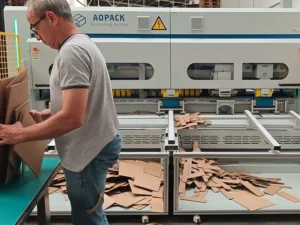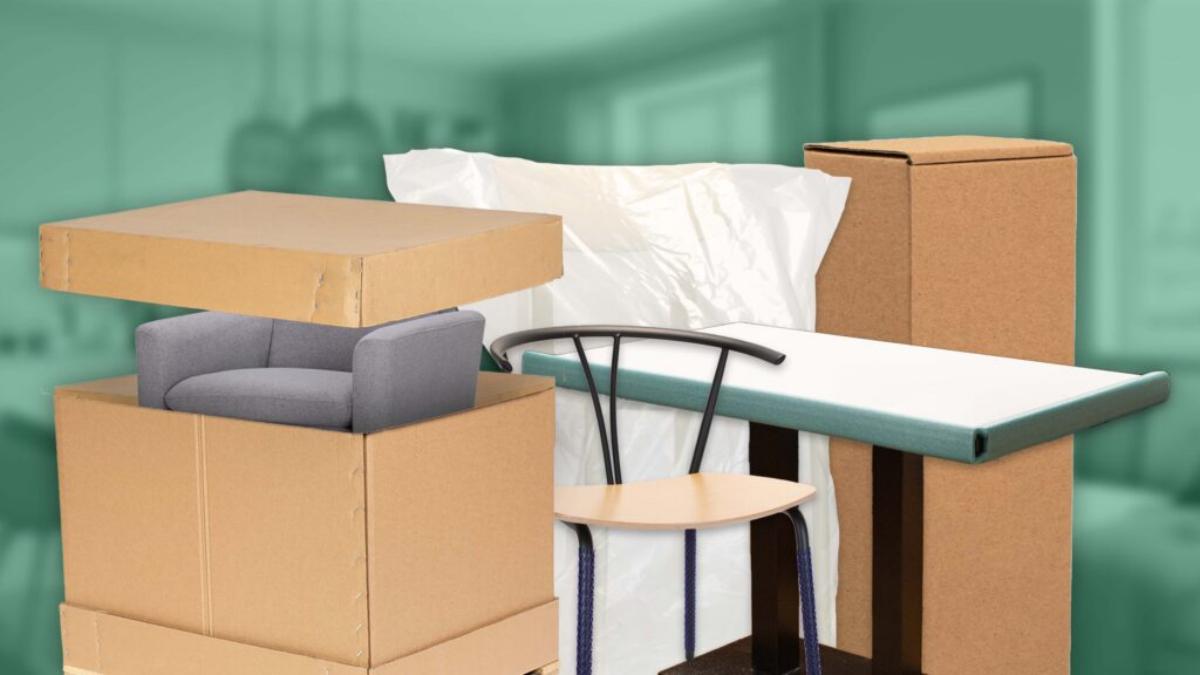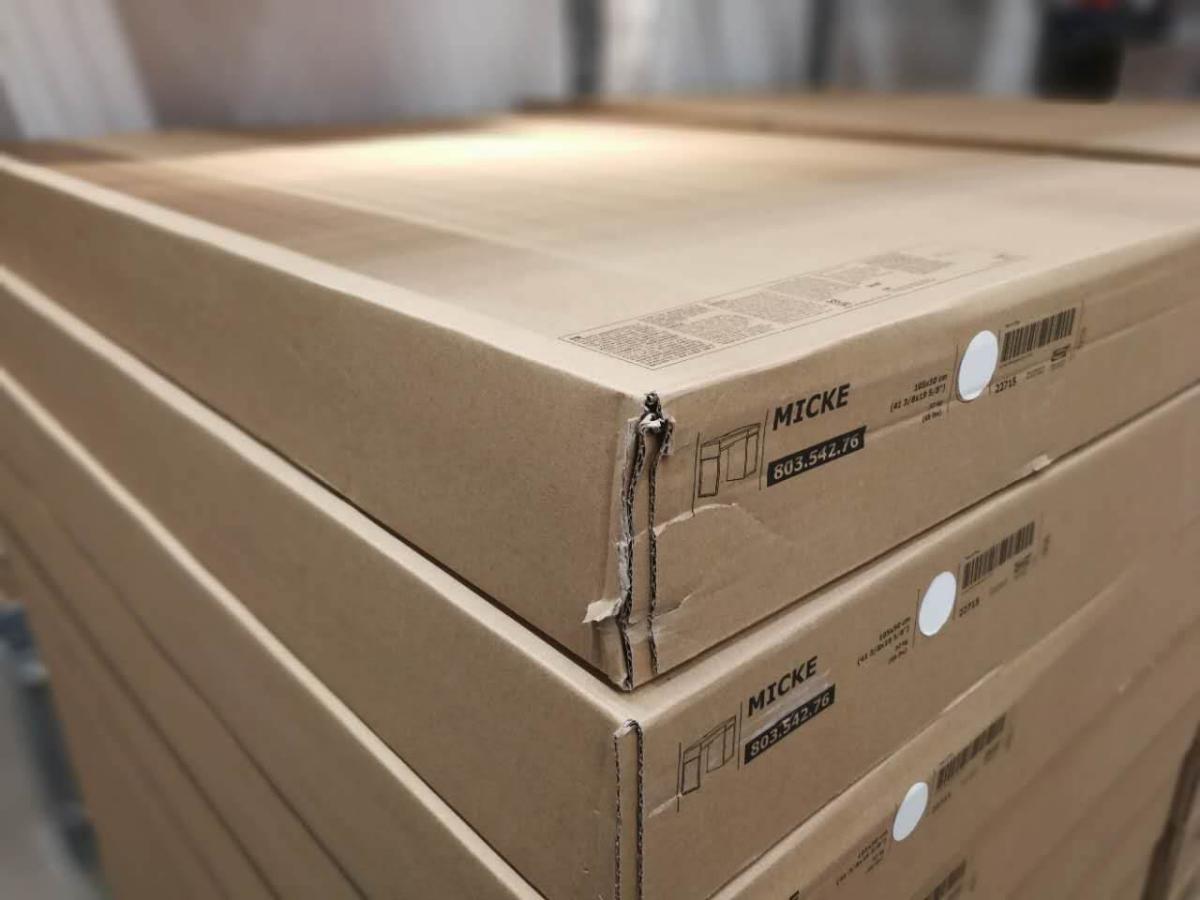The world of furniture has transformed as more firms move away from full trucking (FTL) operations. Most general shipping techniques have shifted to less-than truckload (LTL) assembled furniture or little packages ready to assemble furniture. This change in the supply chain directly affects the packaging needs to survive shipping without destroying the product.
The process of moving can be made much easier when the best furniture packaging materials and organisation methods are used. Here we, provide a full guide to assist in utilising boxes rightly for a move; from selecting right ones for your items to important accessories required while packaging as well as ensuring that everything reaches its place safe and sound.
1. How to choose the right furniture packaging boxes for your needs
Finding the perfect solution for your furniture packaging can be easy job when selecting among various size and types of cardboard boxes packing. The protective capabilities as well as organisation features of these boxes are essential, so it is wise to make a best decision based on what you need.
1) Singe wall cardboard boxes
When it comes to furniture moving, single wall cardboard boxes are the best choice due to their affordable and lightweight properties as well big range of sizes. Manufactured from one layer of corrugated material, these containers can generally bear loads of up to 10-15kg, perfect for little furniture items.
2) Double wall cardboard boxes
Those searching for a very long-lasting packaging solution may advantage from double wall cardboard boxes. Crafted with 2 layers of corrugated card, these containers can bear up to 15kg, 75kg and are perfect pick for safety carrying goods in transit or office appliances. Their excellence capacity against puncture and compressing matched to other types makes them fittingly reliable for protecting delicate items sensitive to temperature fluctuations. There is a big range of sizes accessible when finding the right box that meets your furniture packaging needs precisely.
3) Large cardboard boxes
Big cardboard boxes can provide the perfect amount of space for items that need a lot of space – like bedding, clothing, tablecloths, and cushions. These come in different sizes such as 610mmx457mmx 457 mm or 24” (L) x 18” (W) x 18” (H) which are generally used when moving house or packaging accessories. Consider the weight limit twin-wallet storage may carry approximately 30kg while single wallet storage has a lower highest capacity at 10kg approximately. Check your box specification to make sure you don’t go over this so all belongings will be kept safe during their journey.
2. Essential furniture packaging accessories for a smooth move
1) Bubble wrap and foam
For little pieces of furniture, like doors or brackets, you can use bubble wrap or foam. For ease of transport, these little components must be removed and kept in some type of protective packaging before being thrown into the box. Foam packaging can be used for fragile items that need to be saved, while foam board can be used for items that can be stacked in boxes.
2) Poly furniture cover
Furniture covers produced of plastic stop moisture and dust from destroying your product during shipping. Items that need to be saved for longer periods of time need high protection, in addition to poly furniture covers. These covers also keep the furniture dirt-free until it reaches the customers doorstep.
3) Stretch wrap
When stretch wrap might not be the primary wrapping material you think of when dealing with furniture packaging, it does have uses. When you need to transport something and put all the pieces combine, like to keep cushions and sofa intact, you can stretch and wrap the full thing together. This way you don’t have to separate each cushion to save the full sofa, you can easily stretch and wrap them combine to create a tight seal.
4) Water-activated tape
Water-activated tape is the top option for furniture packaging. This tape firmly bonds fibrous materials. There is also a reinforced water-activated tape for a stronger hold. Furniture can be bulky, so you will need to tape to keep the box strongly sealed during shipping.
3. How to ship furniture correctly
Right preparation when shipping furniture makes sure that the furniture remains intact and sound throughout the shipping process. Some of the most important factors at a glance.
1) Disassembly (if necessary)
Disassembling furniture can make shipping much simple and decrease the risk of damage. Before shipping, you should check whether disassembly is sensitive and possible, especially for bulky or big pieces of furniture. All bolts, screws, and other fasteners should be carefully saved and marked to avoid losses and permit for smooth assembly at the destination.
2) Choice of furniture packaging
Right packaging will save your furniture from knocks, bumps, and other damage that may happen during transport. Furniture generally needs tailor-made packaging solutions. Continuous corrugated stretch film or cardboard, for example, are perfect here to avoid dents, scratches, or breakage. Further, edge protection can successfully protect sensitive corners, and upholstery materials such as bubble wrap are perfect for fragile pieces of furniture.
3) Protection during transport
In addition to picking the best packaging materials, it is vital to securely fix the furniture in the transport vehicle to reduce movement during transport. Lashing straps or locking straps are perfect for this objective. Careful handling during unloading or loading is also vital to avoid damage and make sure a safe arrival of the furniture at its destination.
4) Proper labeling
Right labeling is essential for efficient handling. Label each box with the contents and room area to make unpacking a breeze for the customer.
4. Freight forwarder, post office or moving company
Which shipping technique is top for your furniture depends on different factors – in addition to the budget, it is mainly about weight and size of the furniture, the quantity and the wanted scope of service. A careful comparison of options may be valuable.
1) Deliver furniture by freight forwarder
Freight forwarders are mostly firms with different locations whose vehicle commute between places. This permits freight forwarders to provide general cargo shipping, which can be affordable solution for shipping furniture. In this case, your furniture will share the transport vehicle with items from other customers of the forwarding firm. Alternatively, freight forwarders also provide the booking of a full truck.
2) Send furniture by post
Most furniture can only be moved as a parcel when dismantled and the individual packages may not exceed a weight of 30 to 40 kg. Further, you have the choice of sending your furniture as heavy goods through a parcel service provider. Anyway, heavy goods surcharges are cost-intensive.
3) Furniture transport by moving firm
If a lot of furniture is to be shipped from one place to another, it may be valuable to hire a moving firm. This is the most costly option, but it provides the full-service solution. The professional mowers of moving firms are efficient and quick. They know actually how to make furniture reach its place well protected.
5. Tips for freight forwarders
Professional transport firms know actually what to look for when picking furniture packaging for shipping. Nevertheless, there are some ideas and tricks that can be interesting even for professionals.
1) Use modern packaging
Some latest packaging solutions such as pallet boxes with loading hatches and rightly coordinated carton sets with mechanical bottoms save a lot of time when loading and packing. This makes the full shipping process easier.
2) Buy directly from the manufacturer
By buying packaging materials directly from the producer, you save costs. Further, you get an overview of the producer full portfolio and can make individual arrangements. This makes sure that you forever get high-standard and tailor-made items. Further, attractive volume discounts await you.
3) Customise packaging
By customizing your furniture packaging with your logo, selected colors, or other details, you underline your professionalism. This builds trust with customers and strengthens your brand image.
6. Tips for furniture packaging (5 household items)
1) Packaging and protecting lounge sets
Wrap legs in a bubble wrap and body of sofa in furniture pads to save leather and fabric. Use sliders under the base to move the sofa without scratching floors. It generally requires two or more people to tilt and navigate via doorways safety.
2) Packaging and protecting bed sets
To keep each area of the bed frame safe from damage or scratches, use moving blankets or bubble wrap for metal frames or wooden. And don’t forget to keep all the brackets and screws combine in a labeled bag. Gas cylinders can be located in bags that attach to the bed frame to keep parts combined. For electronic adjustable bed bases, keep all the electronic adapter combined in a box with all the cords and label the box to be part of the adjustable bed. You can add in a bag and tape to the frame. This goes for cots and bunks to wrap and protect each component, keeping all screws combine along with a piece of furniture.
3) Packaging and protecting free-standing wardrobes
Pack and save removable shelves using bubble wrap. Drawers can be covered with strong plastic bags or shrink-wrapped and any shelf pegs or loose screws can be packed in a plastic bag for safe keeping removed hinged doors or sliding doors can also be safely bubble wrapped or wrapped with furniture moving blankets. Label all parts and keep any pegs or screws taped to the furniture piece so you don’t lose and need to look for them when reassembling later on.
4) Dining table
Protect table corners with extra bubble wrap or corner protectors to save from scratches and dings. Glass table tops should be wrapped in moving blankets and then plastic wrap for extra security.
5) Wrapping large appliances
Washers, wrap fridges, dryers in moving blankets to save against scratches.
7. Furniture packaging FAQs
1) How to get free cardboard boxes for furniture packaging?
Finding cardboard boxes for furniture packaging can be accomplished by seeking out Freecycle, and asking discount stores and supermarkets to donate any unwanted containers. Approaching fast food restaurants is another option. Utilizing social media platforms may also show sources where free packaging materials are made accessible.
2) What are the best boxes to use for moving furniture?
Powerful yet lightweight cardboard boxes are the top choice when it comes to packing up for a move. These containers make transporting your furniture items in and out of a removal van simple, and will save them during transport too. They are best for moving furniture or home – ideal packaging material.
3) Is it worth buying boxes for furniture packaging?
Getting boxes for packaging furniture is a vital decision to make, as they are necessary for preserving all your goods when moving them. No problem of how far you are traveling, it is important to invest in good standard boxes so that the transit goes successfully and smoothly.
4) What types of furniture moving boxes are accessible for purchase?
For all moving requirements, cardboard packing boxes in double wall, single wall and big sizes can be purchased. Packaging supplies are essential for any move to make sure a safe journey of belongings so ensure you have the best type of packaging supplies.
5) How do I pick the right carrier?
Picking the best shipping carrier depends on different factors, including the weight and size of the furniture, the distance of transportation, costs, delivery times, and the services required such as pickup and assembly. It is a best idea to match different shipping options, such as freight forwarders, parcel carrier, or moving company. Online reviews can help you make the top choice.
8. End words
Furniture and moving does not have to be a risky or stressful process. By following the steps outlined in this guide, you can make sure the efficient and safe relocation of your heavy possessions. Remember to plan ahead, combine the necessary supplies, save your belongings, and use right lifting methods. Whether you tackle the job yourself or hire professional movers, the ultimate aim is to make your move a successful and smooth transition to your new home.
How useful was this post?
Click on a star to rate it!
Average rating 5 / 5. Vote count: 1
No votes so far! Be the first to rate this post.










